- Home
- Injections
- Laser Treatments
- Specialties
Specialtiesview all
- Other Treatments
- Before After Photos
Before After Photosview all
- Contact Us
- Doctor And Staff
- About Celibre
- Blogs
We know that red stretch marks can cause much distress for patients like you. Red stretch marks often occur at the beginning, when new stretch marks are first being formed. They also occur more often in light or medium skin types.
Red stretch marks are caused when new blood vessels are created by the body to heal the area in and around the stretch mark. These small blood vessels are very near the surface and can appear as red streaks on the abdomen, love handles and even legs.
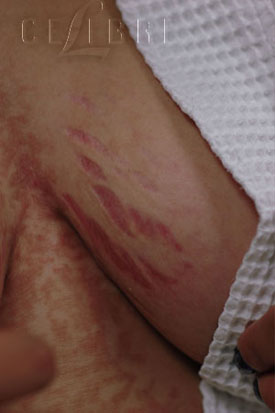
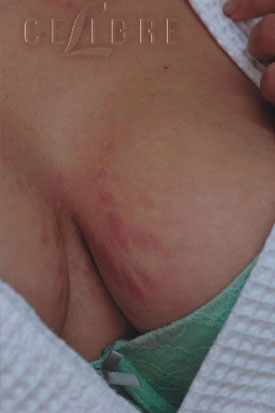
Although these marks can be embarrassing and frustrating, they are easily treated with lasers. Pulsed dye laser treatments are the gold standard for the removal of red stretch marks. These lasers are highly absorbed by the blood in the small capillaries in the red stretch marks. When these small blood vessels absorb laser light, heat is generated, thereby closing them and removing the red color.
To learn more about removal of red stretch marks with lasers, give us a call today to schedule a free consultation.
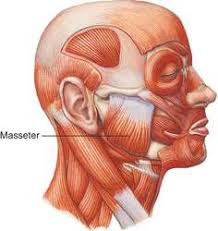 When I meet an injection (Dysport, Botox, filler) patient for the first time, I take note of any signs of muscle tension. We all recognize how this looks on the upper face with a furrowed brow.
When I meet an injection (Dysport, Botox, filler) patient for the first time, I take note of any signs of muscle tension. We all recognize how this looks on the upper face with a furrowed brow.
 However, it’s more common to observe chronic stress of the lower face muscles. This appears as a dimpled chin, downward turn of the corners of the mouth, a puckered look to the sides of the chin, and…the most problematic area – the Masseter (jaw muscle).
However, it’s more common to observe chronic stress of the lower face muscles. This appears as a dimpled chin, downward turn of the corners of the mouth, a puckered look to the sides of the chin, and…the most problematic area – the Masseter (jaw muscle).
The Masseter muscles are the large chewing muscles often referred to as the jaw muscles. They are located in front of the ear and extend down to the jaw bone. For people that grind or clench their teeth, they often will exhibit an overly large, bulky, or square jaw line or Masseter muscle.
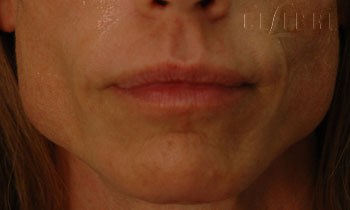
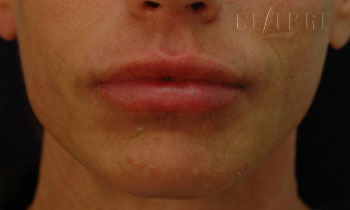
Some common complaints requiring exploration exist in addition to the influence of lower face muscle tension on one’s appearance. For example, those that tend to exhibit a large Masseter muscle mass will confirm migraines, tension headaches, or even neck and shoulder pain upon questioning. They may even describe being under the care of a physician that is providing prescription medications for migraines. Or, a neurologist that is dosing with Botox to the upper face muscles, scalp, or even the back of the neck for relief.
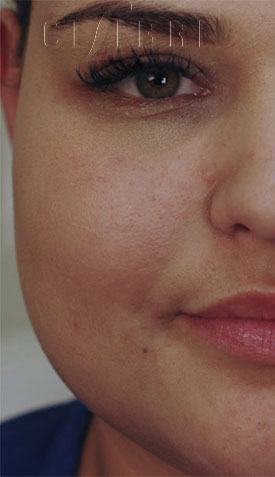
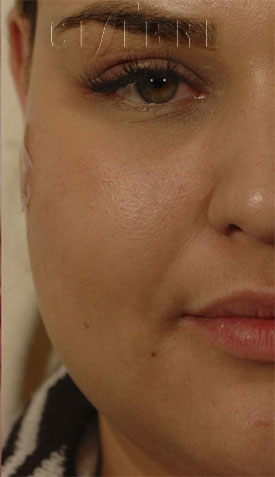
Oftentimes health professionals are not asking the patient if they grind or clench their teeth. Better yet, they should be checking the Masseter muscle for evidence of over-use and tension. The reason being, these muscles that are tight and over-worked may lend to symptoms of migraines with radiating pain. Along the neck (of the side they are using) and sometimes down the shoulder.
Patients find relief with Dysport/Botox in Masseter muscles, despite our aesthetic focus. Pain and tension is generally relieved within several days. And the appreciable changes to the appearance are realized in as little as a few weeks for most.
When we are able to help piece the puzzle together, it’s rewarding for both patient and practitioner alike.
As patients, and even as injection practitioners, we sometimes overlook the importance of the “south” end of our faces. Specifically, that little muscle that works overtime but gets little attention…the chin. The chin muscle, also known as the mentalis, can become quite a challenge when exercised too much.
For those that tense up the chin area, or are prone to clenching of the jaw, the chin may take on a dimpling effect. Using Botox and Dysport to relax this area is an inexpensive way to tame this pesky muscle. Besides having a smoother tablecloth over the chin, when relaxed, we keep the chin from wanting to become knobby and curled upward over time.
Dysport to relax the chin
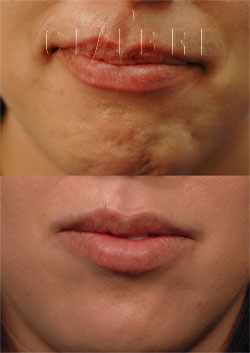
Using dermal fillers such as Restylane or Radiesse, we are able to create a much smoother canvas to better blend the peaks and valleys that are created from over-active muscle movement in the lower face.
Restylane filler for shaping the chin
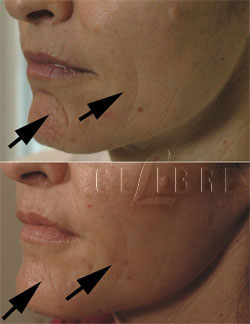
Lasers offer a sophisticated approach in resurfacing the topography of the skin by literally removing microscopic pieces of wrinkles and lines to produce new skin and collagen absent of the memory of those wrinkles. Deep fractionated technology has given us an entirely new and better approach to this endeavor.
Photo 1 – Deep fractionated laser resurfacing
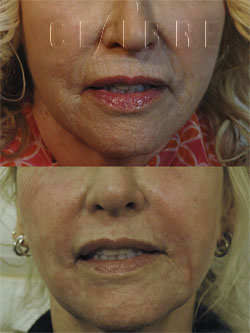
In many cases, a combination of any of these 3 approaches may be the best recipe. As with all injection treatments, let us remember that the canvas of the face should be approach as a whole. Giving equal attention to all areas provides for synergy and balance.
Us ladies generally know there are many options for our faces, we complain about our necks, but we seldom give attention to our hands beyond a manicure. If we do notice the increasing changes, we rely on expensive and ineffective hand creams. So, what’s changing?
As time marches on, the skin and padding of our hands begins to thin out, we lose volume, the skin becomes more crepy. It is these cascade of events that then allows structures that are usually tucked in tight to become more visible – crazy making visible. Examples: large, bulging veins, bony structures are more prominent, tendons and ligaments give a more ropy appearance.
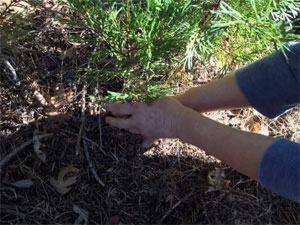 Those that know me know that I am not a fan of my own hands. They work hard and are usually cutting wood and digging in dirt while on my little homestead in the mountains. Arthritis has now set in which makes me a little more self-conscious.
Those that know me know that I am not a fan of my own hands. They work hard and are usually cutting wood and digging in dirt while on my little homestead in the mountains. Arthritis has now set in which makes me a little more self-conscious.
The last thing I want to do is have a manicure that will bring more attention to these paws besides being too lazy and frugal to want to rely on this service. I have been a patient unto myself to use the three treatment plans outlined below, and I want my female patients to know that options do exist.
Brown Spots
Whatever name we give them (ex: sun, liver, or age) brown spots have got to go! Using our Q-switched YAG lasers, we are able to effectively remove these with no downtime and with only 1-2 treatments. This is my favorite laser for several reasons, but for brown spots – it’s the gold standard.
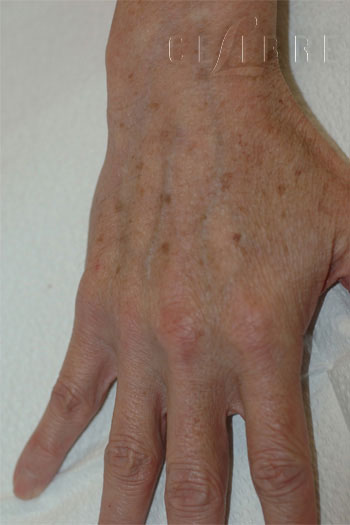

Dermal Filler Injections
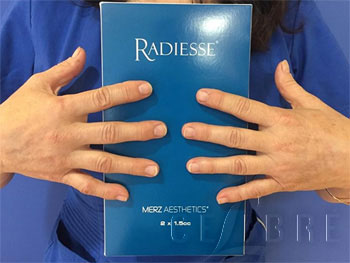 Lasers and moisturizers work to soften and improve the skin of the hands, but what are the options for the other issues? First and foremost, my favorite and direct approach is to use filler injected into the hands superficially under the skin. The reason for this is to restore volume AND camouflage the structures when the filler flows above and around the landscape of the hands. Most patients benefit from 2 syringes of Radiesse one to two times per year. Results are immediate and support a good duration.
Lasers and moisturizers work to soften and improve the skin of the hands, but what are the options for the other issues? First and foremost, my favorite and direct approach is to use filler injected into the hands superficially under the skin. The reason for this is to restore volume AND camouflage the structures when the filler flows above and around the landscape of the hands. Most patients benefit from 2 syringes of Radiesse one to two times per year. Results are immediate and support a good duration.
Sclerotherapy
A secondary approach is to use sclerotherapy to resolve/remove the larger veins that are not needed. This involves a chemical solution that is injected directly into the vessels. Results are achieved with treatments spaced six weeks apart and may require 2 to 3 (average) treatments for optimal results. Personally, I believe the use of filler offers the best financial investment with a more immediate effect. Using both treatment plans is also an option as well.
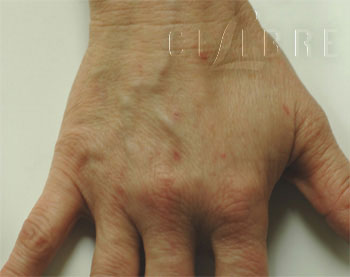
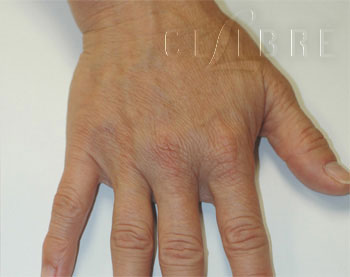
Sclerotherapy (Asclera) for the hands after 3 treatments
If you have a 5x magnification mirror like I do, you will probably claim that your pores are the size of swimming pools. Although we know the mirror is an exaggeration of the truth, it’s easy to be on a mission to shrink those pools!
Having a good skin care regimen that involves exfoliation (verb: come apart or be shed from a surface in scales or layers) is a good step in helping pores reduce in size by eliminating the stretching of a clogged pore. At Celibre, we prefer you use a natural, chemical method of exfoliation (ex: Glycolic Acid) versus a mechanical method such as microdermabrasion or an exfoliating brush. Not only are the results of chemical exfoliation more consistent, but you’ll pay less as well!
Glycolic Acid and other alpha hydroxy acids (AHA) are gentle enough to be used every day and are less harsh on the skin versus a mechanical method that may cause more irritation or exacerbate facial spider veins, redness, or irritation. We also use Retin A and for those of you that like more aggressive results, it’s amazing for long term skin health and collagen stimulation.
Most products advertised on TV claim to reduce or shrink the “appearance” of pore size. That one word indicates that this effort is temporary and a superficial change to the skin’s surface. For example, astringents like witch hazel, citrus juice (substances that cause the contraction of body tissues) are popular, but limited and temporary in their ability to shrink pores.
To produce an actual change in the size of pores, we prefer lasers (Light Amplification by Stimulation Emissions of Radiation). A laser has the ability to cause physical changes to the shape, size, and structure of a pore – not just on the surface alone but also below the surface where the sebaceous gland (oil gland) and collagen layer lie. There are two categories of laser technologies that accomplish pore size reduction for you – ablative (downtime) and non-ablative (no downtime) lasers.
Many practices advertise chemical peels, facials, and micro-needling to shrink your pores. LASERS always out-perform these options because they penetrate much deeper into tissue and produce heat…and heat matters.
We all dread our 5x magnification mirror yet are fascinated by what it reveals. Somewhere between our high magnification mirrors and our makeup ready faces lies the truth. When choosing a treatment plan for your large pores, pick simple and inexpensive skin care products, and consider lasers.
Rhinophyma = Enlarged Nose. Greek: “rhis” = nose “phyma” = growth.
Rhinophyma has a distinct appearance. Many patients mistakenly worry that they have it because their nose is larger than they prefer. However, rhinophyma is distinct in that the condition worsens over time as the nose grows larger. The result is a fleshy, ruddy, bumpy, and overgrown (swollen looking) nose.
Rosacea, a skin disorder involving too much blood flow to the facial skin, is a primary factor in developing rhinophyma. At this stage, it usually represents advanced and uncontrolled rosacea. Think of Rhinophyma as being too much food supply (blood) being delivered to the nose which, in turn, causes abnormal growth.
Whether you are in the early or late stages of rhinophyma, excellent treatment options are available. Like many conditions, seeking treatment sooner than later results in better outcomes. For mild to moderate stages of Rhinophyma, using our Sciton Profile (Nd: Erbium YAG) fractionated laser is an excellent tool to reduce the bulk of the nose. For advanced cases, surgical correction may be required.
If you have Rosacea and are concerned only with redness to the nose or cheeks, pulsed dye lasers work extremely well. With our Candela VBeam, Cynosure VStar combination we can reduce or eliminate the redness and superficial vascularity associated with Rosacea.
A common associated condition we encounter in our practice is one where the nose looks thick and oily. There are often fleshy bumps and an oily appearance with this condition. These wart-like bumps (sebaceous or oil glands) rise up like small cauliflower growths – creating a uneven texture, large pores, and a cosmetically undesirable appearance. These bumps may also be found in other oily areas of your face including the forehead and inner cheeks (T-zone).
At Celibre Medical, we use an old school, non-laser approach called a Hyfrecator to treat these fleshy bumps. This electrical device is helpful in shrinking or removing the bumps. For larger and more numerous bumps, using the Sciton Profile fractional resurfacing laser is an excellent option.
Although conditions such as rosacea, sebaceous hyperplasia, and oily skin are chronic conditions, there are options to effectively manage and treat them. Early treatment goes a long way in achieving good results, so let us show you how today. Call for a free consultation.
Every day, we hear patients like you say they are overwhelmed and confused with the vast number of treatments and laser technologies being advertised. Joining the ever-growing list are new facials, PRP (Platelet Rich Plasma or the Vampire Lift), micro-needling, and numerous chemical peels. In our opinion, these options are often over-priced and over-promised.
Why? Because many are offered as alternatives to the benefits of laser resurfacing. The key fundamental reason why laser resurfacing will always outperform these other options for treating your wrinkles or acne scars is HEAT. All the other options lack the laser’s ability to generate heat and new collagen. It’s the heat that induces a thermal injury which contracts the triple band of collagen, induces new collagen formation, and keeps this chain of events rolling for several months during the healing process.
At Celibre Medical, we believe evidence trumps trends. Let us introduce you to the superior benefits of fractional laser resurfacing.
It has been over twelve years since I joined the Celibre Medical team as a registered nurse with only a Neurology background. I did not know Aesthetic Medicine, didn’t talk “skin”, and thought lasers were only for eye surgery.
Through the many years in my role here, I have come to recognize how important it is to be relevant, on top of trends, able to argue the science vs. the hype, and remain true to our mission of being…”the most trusted name in laser skin care.” Laser technology fascinates me, but how our body’s respond to the lasers fascinates me more. As the verse says, “fearfully and wonderfully made.”
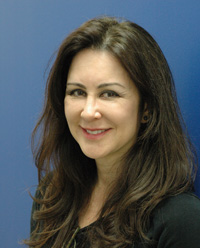 I’ve prided myself on being a die- hard skeptic, and at times, to a fault. However, my questioning everything has served me well in an “industry” that relies heavily on marketing versus science. For example, in the last five years plus, we have seen a growing trend of manufacturers of medical devices, injectable products, and topical skin care market to the media. The magazine or the television show is given free, interesting content, and the manufacturer receives free marketing and publicity. It’s not long before the consumer calls us to request the latest treatment they heard or read about. Very rarely does that same consumer want to hear why we do not use what they are requesting.
I’ve prided myself on being a die- hard skeptic, and at times, to a fault. However, my questioning everything has served me well in an “industry” that relies heavily on marketing versus science. For example, in the last five years plus, we have seen a growing trend of manufacturers of medical devices, injectable products, and topical skin care market to the media. The magazine or the television show is given free, interesting content, and the manufacturer receives free marketing and publicity. It’s not long before the consumer calls us to request the latest treatment they heard or read about. Very rarely does that same consumer want to hear why we do not use what they are requesting.
There was a time, not that long ago, when the manufacturer would come meet with us to review the studies, to promote the science behind the technology or product. Not any more – the consumer is a much easier person to impress, and let them drive the demand to compel the practitioner to provide the requested service or product without much regard to science. It’s not unusual to have the reps call us and suggest we are “missing the band wagon” if we don’t act quickly like our competition.
Jump ahead to the latest copy of New Beauty magazine. One of our dermal filler representatives gave us a copy to peruse. I read it from start to finish only to discover articles that were actually advertisements. It was overwhelming. Many “high end” dermatologists were quoted with no science or sound information to back up the claims or treatments they were promoting.
One topic that caught my attention were statements about there being little risk for antibodies, or as the author actually stated, “You cannot become immune to them (Botox/neuromodulators) entirely.”* Well, that’s just not science. I should know because I have been resistant to all neuromodulators since 2007. There is also an increase in the numbers of consumers reporting impending or actual resistance to their Botox treatments.
In reading this “beauty” magazine, I discovered there are answers for everything– my hair color, my nails, my pores, my tanning products, my injections, fat, cellulite, moisturizer, and the list goes on. I would literally have to spend all day and all of my week’s wages to keep up with the suggestions they made for head to toe beauty.
I recognize that I don’t look like the average “aesthetic nurse.” My hair is usually not coiffed. I show up to trade seminars looking inferior and sometimes feeling inferior. I’m not a polished speaker, but I AM passionate about aesthetic nursing.
The message is simple: I want my patients to feel good about being the best version of themselves. Delivering sound information, balanced feedback, good and equitable treatment options that rise above the hype.
I’m must admit I felt a little dirty and ashamed of our present culture when I put down this magazine. The experience made me want to question if there is any point in competing with the big names, big bucks, big marketing. The answer is “yes.”
*New Beauty Special Edition
Volume 13, Issue 3 pg. 60
The story is the same for me and my female patients. It’s a story that repeats itself several times a day.
My forty or fifty-something year old female patient will sit across from me and proclaim, “What the hell is this?!” More recently, a woman in a monotone, quiet voice said, “it just sucks, it sucks so bad.” (excuse the language, but that’s the exact verbiage she used). We laugh together, but sigh at the same time as we begin the task of deciding what her treatment goals and options are. We recognize that we still have so much to be thankful for – to be healthy enough to sit in my treatment chair, a body that isn’t failing us in the right ways, the fact that they are seeking treatments is a cause for celebration to some extent as we fight the good fight against father time. Yet, it’s difficult to reconcile the physical aging process with our youthful spirits and otherwise healthy, strong bodies.
Usually, my patients point to the neck area, brown spots, extra skin folds on the face, or the crepey skin found in many areas of the body. I often become uncomfortable as my patients slowly pick apart everything they don’t like about their appearance. When they finish, I quietly describe the features that I find lovely that work to our benefit – high cheek bones, a pretty Cupid’s bow on the upper lip, a strong bony rim along the upper eye – all of us have these features to recognize and appreciate.
Even I get perplexed at how the aging process sneaks up and pounces on us in such a short time. I often refer to a house of cards wherein one card barely moves, but it creates a cascade of events. We proclaim that our cheeks fell overnight, our neck became our mother’s neck within a year, the brown spots came out of nowhere and the melasma struck us while on a sun-filled vacation. The list goes on. Sound familiar?
I recently approached Dr. Kaplan, my Medical Director, who is a facial plastic surgeon. I did the infamous two hand move to pull my lower face back and stretch the neck upward. Why, I asked, does this happen mostly to women…quickly I might add.” The answer was, in part, hormones. Yep, sneaky little hormones. Is there anything good about them? In our practice, we can blame them for acne, excess hair growth, cellulite, melasma, spider veins, stretch marks, and now crepey skin and a sagging neck. Let’s not forget good ol’ perimenopause that causes hot flashes, weight gain, etc.
I have an internal check list in my head when I discover another sign or symptom that the aging process is gaining ground. For example, I recently discovered that I had crepey skin above my knees. My knees for Pete’s sake! Can’t I at least have good knees? I was the first staff member to quickly volunteer to try out a new skin care product for crepey skin. My right eyelid and brow are descending. My sun spots are routinely lasered as they develop. I have filler in my cheeks to re-position what gravity is causing. See? I’m the patient as well. I don’t have all of the answers, but I do know what it’s like to see our bodies changing even though we still feel like we’re 30.
I attended a laser conference awhile back that had premier surgeons and aesthetic physicians from around the world speak about current trends in aesthetic medicine. When the panel members were asked what their most daunting challenge was with female patients, this is what one said and the rest agreed with. “The forty-something year old women used to demand that we help her look good in her clothes. Now these women are demanding options to help them look good naked.”
I snickered out loud thinking they were making light of the issue and joking. They weren’t. Really? I mean, REALLY? Has it come to that? I’m pretty certain that I had a good body at age 20 and still did not recognize that fact. I’m even more certain that the current goal of looking good, at age 52, in my clothes, is good enough.
In that moment, I achieved balance for myself. I’ve come to terms with my looser skin and cellulite, but I will still seek safe and effective options for my neck. I can laser my sun spots, but shrug off having only “improved” crepey skin. I can put filler in my hands to disguise the veins and bony structures, but shrug off my failing vision and hot flashes. I’m comfortable in my skin, and I want my patients to find that balance as well.
At age 52, or any age, there is much freedom in having grace for ourselves and a sense of humor as we keep pace with the changes father time brings. As my best friend, Heidi wisely once said,
“Time can be a kind friend…unless it’s on your face.”
That made me laugh.
Does your skin look tired or dull? Are fine lines or crepiness showing up around the eyes and cheeks? If so, Retin A may be just the option you are looking for.
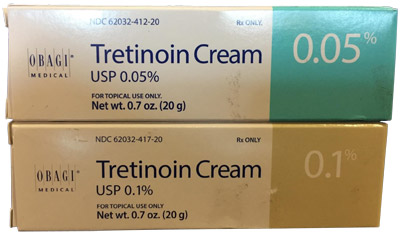 No one challenges Retin A’s reputation as the “gold standard” of skin care products. It allows for sloughing of skin cells to bolster skin thickness and collagen production. It’s ideal for facial wrinkles, lines, and sun damage.
No one challenges Retin A’s reputation as the “gold standard” of skin care products. It allows for sloughing of skin cells to bolster skin thickness and collagen production. It’s ideal for facial wrinkles, lines, and sun damage.
Although laser treatments are our specialty, some patients just can’t have the downtime associated with laser resurfacing. So, while patients wait to set aside the time for laser resurfacing (and even after their treatments), Retin A helps keep them looking refreshed.
Retin A is a workout for the skin. It causes dead skin to flake off and in the process increases the cell reproduction rate. This means instead of having dead skin showing through, you have new skin cells at the surface, hence the healthy, vibrant and refreshed look. When a patient’s skin is unable to tolerate Retin A, or an individual prefers less of a skin reaction to a topical product, Glycolic Acid products are an excellent alternative.
Regardless of which skin care product one chooses, having routine exfoliation through topical applications is the true gold standard for healthy and revitalized skin. Don’t forget that daily sunscreen as being the best skin anti-aging habit!
Are you embarrassed to wear your favorite pair of shoes because of toenail fungus? Have all the prescription medications failed? If so, it’s time to take the next step with laser toenail fungus removal.
You may trip over the pronunciation of “onychomycosis,” but it’s the term for nail fungus. Nail fungus is caused by fungi that cause superficial infections of nails, skin, and hair. This infection represents over 50% of all nail disorders and affects the toenails in the majority of adults.
Most patients recognize toenail fungus as yellowish/greenish discoloration, thickening, and in some advanced cases, lifting of the nail. The cuticles may also become red and tender. Unfortunately, there are limited options, and many available topical and oral medications have long treatment programs with high recurrence rates.
For topical medications, penetration of the nail is always a challenge. When oral medications are used, the concerns over how these may affect the liver is a concern. For the elderly or those with immune system problems, this is heightened concern. Monitoring lab values for liver enzymes is a requirement when using these oral medications which leads to more time and effort for the patient.
Although there are limited long-term studies, research reveals a disappointing success rate of between 40 and 50% failure for oral medications, https://www.ncbi.nlm.nih.gov/pmc/articles/PMC4106353/.
This is where lasers enter the picture. LASERS are high powered LIGHT and HEAT that come together to produce a very good alternative to traditional toe fungus medications. The concept is to use LASERS to destroy the fungus with heat.
At Celibre Medical, we use two different lasers to reach a level of heat/light that has led to over a 95% success rate with patients. Although “success” may not be realized for a few months until the new nail bed begins to grow at the base of the cuticle, early cosmetic benefits of improved color/texture of the nails are often observed in the first few weeks of treatment.
There is no downtime with treatments, and only with mild to moderate heat discomfort during the short treatment. Most treatment plans end after a series of three treatments performed once weekly
https://celibre.com/toenail-fungus-treatment/
Lori Ishii Haney
RN, MEP-C, ANS
Certified Medical Laser Safety Officer
Diplomate of the American Board of Lasers and Surgery
Ever wonder what to call that v-shaped sun damaged area on your chest? The one that you wish you could even out so that it doesn’t show when you’re wearing that new off the shoulder dress.
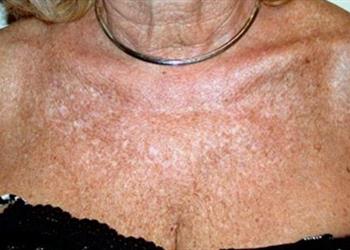 “Poikiloderma” is the fancy name for photo-damage to the neck and chest areas. This condition has a distinct look of red, brown, and even white areas. The texture of the skin can also appear leathery with time. Men generally have this condition on the sides of the neck whereas women tend to get it mostly on the chest in the V-neck shape.
“Poikiloderma” is the fancy name for photo-damage to the neck and chest areas. This condition has a distinct look of red, brown, and even white areas. The texture of the skin can also appear leathery with time. Men generally have this condition on the sides of the neck whereas women tend to get it mostly on the chest in the V-neck shape.
At Celibre Medical, we use a combination approach to treat the condition. This includes the pulsed dye laser (VStar/VBeam) for red pigment, q-switched lasers for brown and BBL (Broad Band Light) to for overall evening in color.
Some signs that you may have Poikiloderma:
*Red, brown, or both colors
*Areas of light skin (most severe form of sun damage where skin has lost pigment)
*Rough texture
*Leathery appearance
*Sides of neck, back of neck, chest
Treatment Plan:
*Responds best to laser and BBL treatments that target the red and brown color separately
*Laser first and then BBL (Broad Band Light) for evening the tone
*Determine which color should be addressed first. Our goal is to “take off one thing off the plate first.” Meaning, remove the red before addressing brown or vice versa.
*Laser every 4-6 weeks
*Average is 6 to 8 treatments using 3 different laser/BBL devices
*Some Social downtime expected with bruising of skin often required to remove redness.
If you are not liking the changes you are seeing with your neck, you are in good company. We know this by the numerous infomercials that cater to this topic.
Besides a plethora of skin care products that claim to help, we are inundated with treatment options using Ulthera, Radiofrequency, Lasers, IPLs, microneedling, PRP, to just name a handful. But what about Kybella?
The new kid on the block is Kybella – an injectable medication similar to old school mesotherapy. With a huge marketing push, Allergan has launched this as a way to address the infamous “waddle” or “Turkey Neck.”
The concept with Kybella is that the medication will basically dissolve fat through an inflammatory process that is initiated upon injection. This procedure involves numerous injection points (up to 60 each visit), causes profound swelling of the neck for several days, and can lead to some concerning complications with the most serious being nerve injury in the mandibular area.
https://www.realself.com/kybella/answers/nerve-damage
In addition to the risks and discomfort involved, treatments are very pricey with a price tag of $1300 to $2000 PER TREATMENT. The average patient requires more than one treatment, so the treatment program is quite an investment. Further, the best “responder” is generally a patient that does not have significant laxity (extra, hanging, redundant skin). Hmmm…it would seem like the person that has the biggest need may not be the best candidate after all for Kybella.
https://www.realself.com/Kybella/cost/California/Huntington-Beach
Regardless of which treatment plan a practice claims to use in treating the delicate area of the neck, there are risks vs. benefits for all options. Safety and efficacy should go hand in hand. Just because something is “new” does not translate to a good treatment option. Even non-invasive options carry risks and should be considered when considering a treatment plan.
“Frustrating” may be an understatement for the many women (fewer men) that struggle with this very common skin condition. In fact, this is the most common pigmented skin condition we treat in our practice. Similar to acne, this condition is oftentimes an emotional one being that both are considered non-curable and chronic and linked to a hormonal influence. However, both are manageable with good options for improvement.
Melasma comes from within. Meaning, the cells of color (melanocytes) develop on the surface of the skin, creating brown shades of color represented as patches in typical locations such as the forehead, bridge of nose, cheek bones, and upper lip. The onset may be insidious over time or may develop within a very short amount of time – weeks even.
If we understand that the discoloration is in response to hormonal influences and genetic predisposition, we must also recognize that there also triggers that exacerbate or “feed” the condition. Specifically, heat, humidity, and UV radiation (sun light). Living on planet earth, we cannot avoid all of these elements at all times and still enjoy our lives and activities. However, we can modify our routine while seeking a treatment regimen.
If heat, humidity, and light radiation all work to worsen melasma, we would never want to use a laser option as this is pure light and heat! Unfortunately, numerous medical professionals continue to use their lasers or IPLs as a treatment option and usually doing a disservice to their patient. In the event there is initial improvement of color, research over the many years will confirm that melasma will almost always return within 6 months and, in many cases, return with a vengeance. Besides this disappointing result, lasers are a much bigger expense than a topical option.
In our practice, using a topical ingredient of hydroquinone has offered a 95% success rate with our melasma patients. Success being improvement/control vs. cure. Our success rate is also based upon educating our patients on how to manage their condition, using only fresh hydroquinone that is not pre-made, and avoiding the use of lasers and heat for melasma.
As we enter into possibly another hot summer wherein the elements are wanting to trigger your melasma – don’t fret. Pull out the hat, sunscreen, hydroquinone, and enjoy your activities. You are in good company.
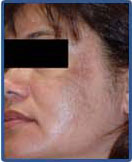

* Melasma Before and After Pictures
In the world of cosmetic dermal filler treatments, the arrival of cannulas as a replacement for needles became a popular option among injectors.
The concept was to have a flexible plastic tubing/sheath that was threaded into a puncture site to then inject the filler product. It’s the same process that is used when an intravenous catheter is used to administer medication. The theory was that the tubing would eliminate or minimize bruising by avoiding puncture of blood vessels while at the same time reducing potential complications such as injecting product directly into a blood vessel.
We have not found that cannulas are superior, or even equal, to needles, and here is why:
As with all things, Celibre Medical relies on what is tried and true vs. what is new.

